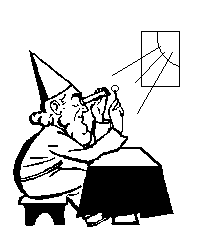Professional Gemologist Certification Course
The Dichroscope
What is a Dichroscope?
Dichroscopes are relatively inexpensive instruments. You can even make your own. There are two types: one has two polarizing filter pieces at one end (sometimes called a “London dichroscope”), the other uses a piece of optical-grade calcite. Both will give you a split image, which shows any pleochroic colors present.
The dichroscope can also help confirm other gemological test results. Occasionally, a refractometer or polariscope will give ambiguous readings. The dichroscope can clarify that information. For example, it is often difficult to tell if you’re seeing anomalous double refraction (ADR) in red and purple stones. If you find pleochroism with the dichroscope, you can be sure the stone is doubly refractive.
The dichroscope can also determine if a doubly refractive gem is uniaxial or biaxial, something that other instruments may not always distinguish.
Faceters can also use a dichroscope to help visualize colors in finished gems cut from pleochroic materials.
This traditional dichroscope utilizes optical-grade calcite. The second photo shows what a dichroic gemstone looks like when viewed through this tool. Photo © Joel E. Arem, PhD, FGA. Used with permission.
What is Pleochroism?
All gems, except those with isometric or…
Donald Clark, CSM IMG
Donald Clark, CSM founded the International Gem Society in 1998. Donald started in the gem and jewelry industry in 1976. He received his formal gemology training from the Gemological Institute of America (GIA) and the American Society of Gemcutters (ASG). The letters “CSM” after his name stood for Certified Supreme Master Gemcutter, a designation of Wykoff’s ASG which has often been referred to as the doctorate of gem cutting. The American Society of Gemcutters only had 54 people reach this level. Along with dozens of articles for leading trade magazines, Donald authored the book “Modern Faceting, the Easy Way.”
Never Stop Learning
When you join the IGS community, you get trusted diamond & gemstone information when you need it.
Get Gemology Insights
Get started with the International Gem Society’s free guide to gemstone identification. Join our weekly newsletter & get a free copy of the Gem ID Checklist!
